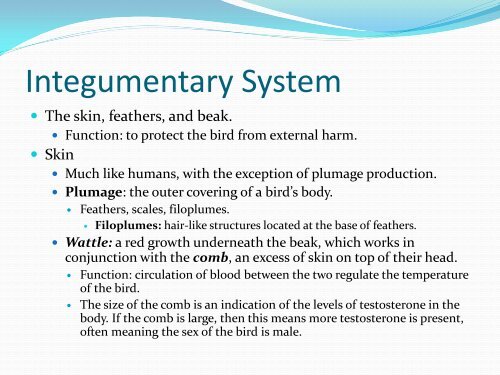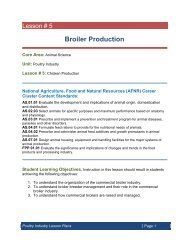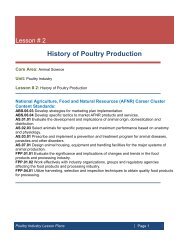Anatomy and Physiology of Poultry - U.S. Poultry and Egg Association
Anatomy and Physiology of Poultry - U.S. Poultry and Egg Association
Anatomy and Physiology of Poultry - U.S. Poultry and Egg Association
Create successful ePaper yourself
Turn your PDF publications into a flip-book with our unique Google optimized e-Paper software.
Integumentary System<br />
• The skin, feathers, <strong>and</strong> beak.<br />
• Function: to protect the bird from external harm.<br />
• Skin<br />
• Much like humans, with the exception <strong>of</strong> plumage production.<br />
• Plumage: the outer covering <strong>of</strong> a bird’s body.<br />
• Feathers, scales, filoplumes.<br />
• Filoplumes: hair-like structures located at the base <strong>of</strong> feathers.<br />
• Wattle: a red growth underneath the beak, which works in<br />
conjunction with the comb, an excess <strong>of</strong> skin on top <strong>of</strong> their head.<br />
• Function: circulation <strong>of</strong> blood between the two regulate the temperature<br />
<strong>of</strong> the bird.<br />
• The size <strong>of</strong> the comb is an indication <strong>of</strong> the levels <strong>of</strong> testosterone in the<br />
body. If the comb is large, then this means more testosterone is present,<br />
<strong>of</strong>ten meaning the sex <strong>of</strong> the bird is male.








